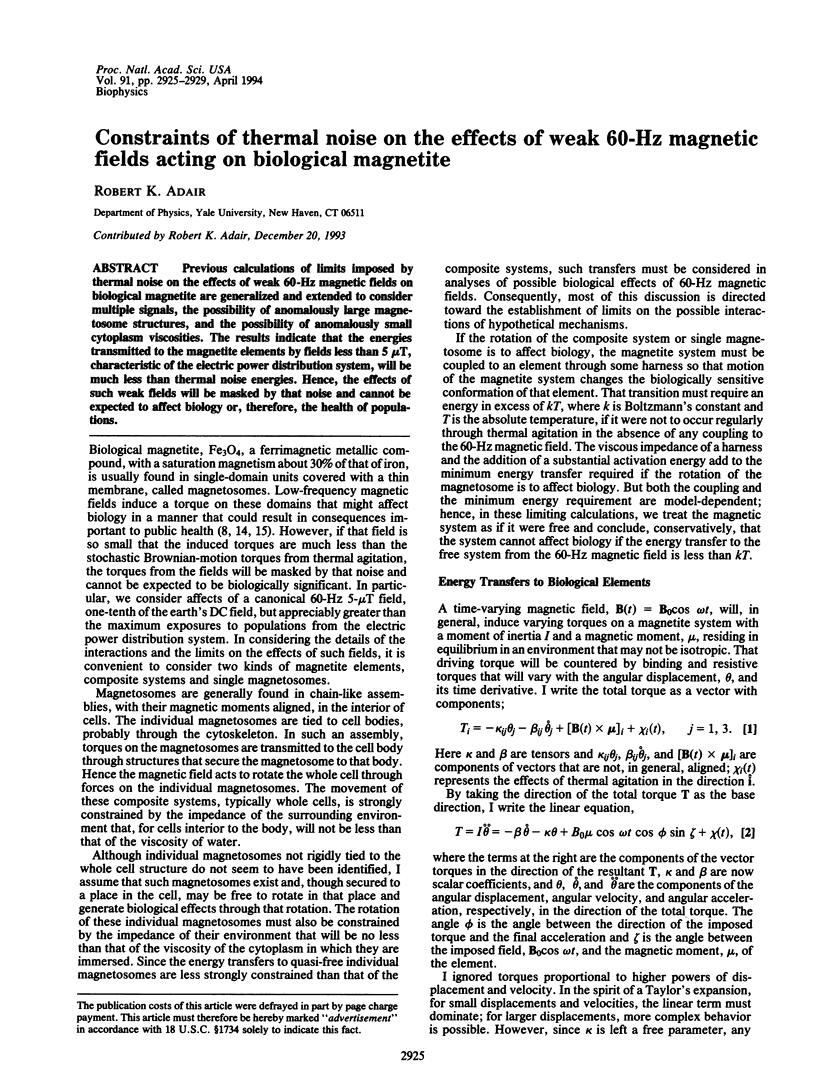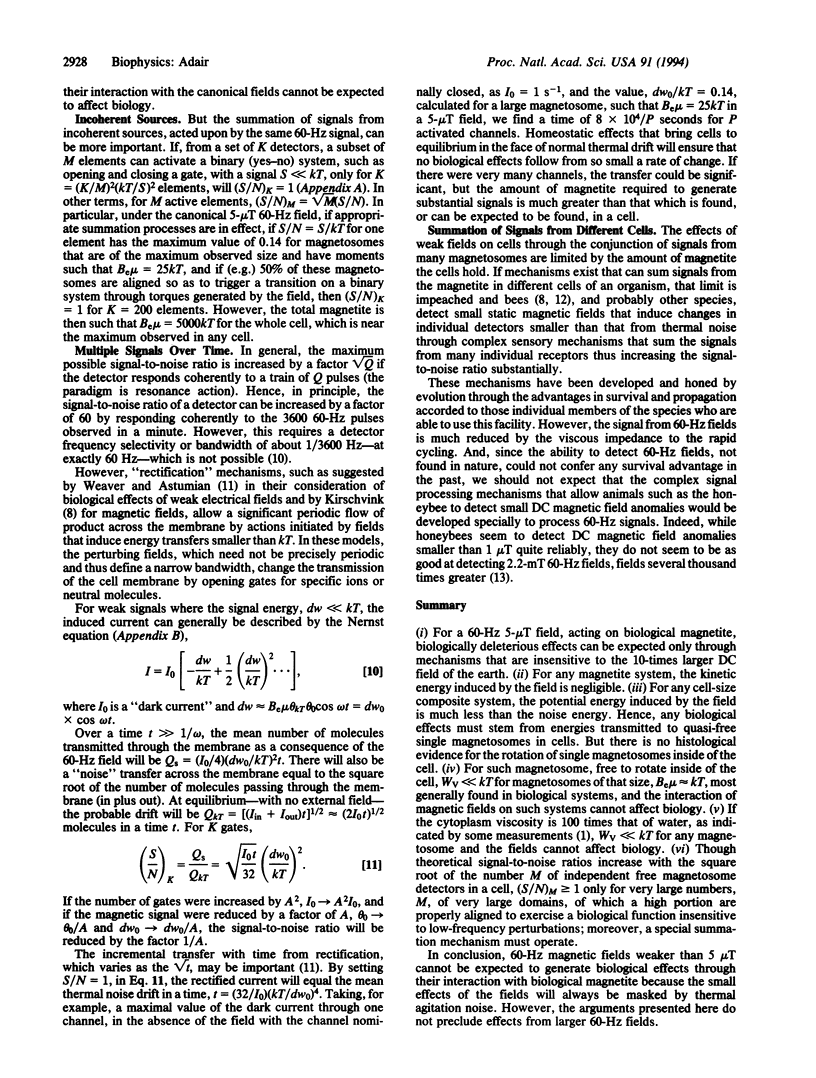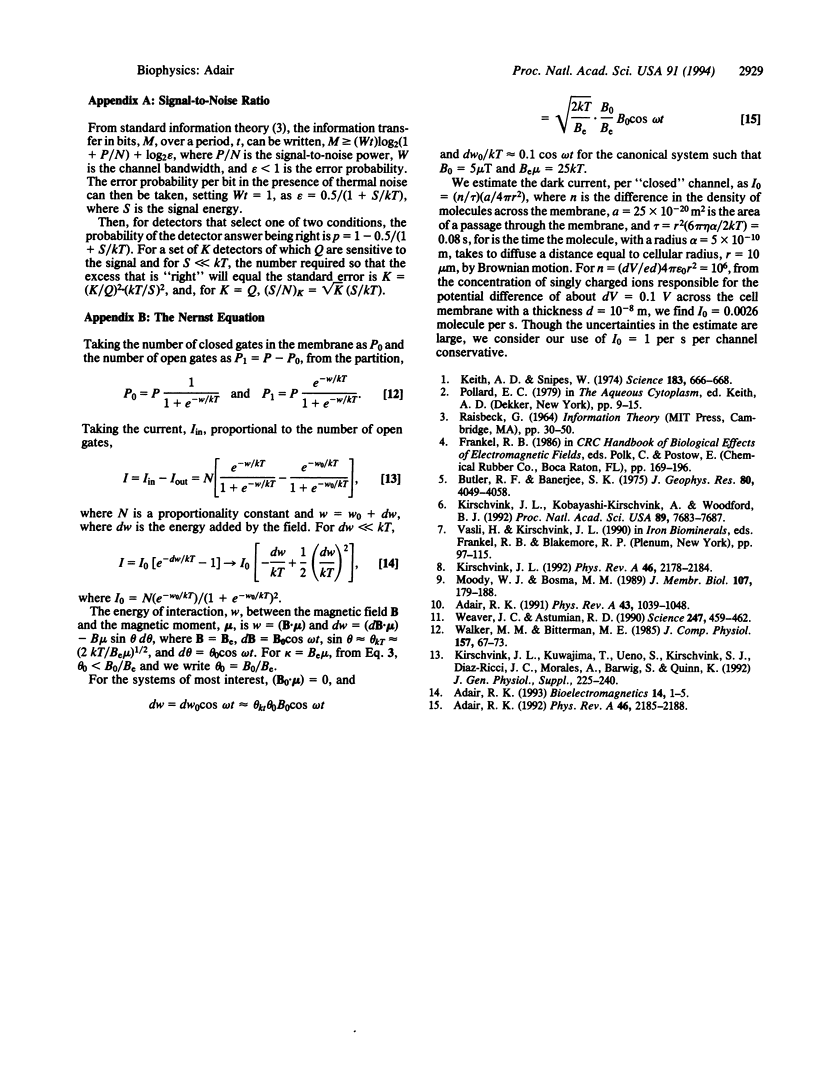Abstract
Previous calculations of limits imposed by thermal noise on the effects of weak 60-Hz magnetic fields on biological magnetite are generalized and extended to consider multiple signals, the possibility of anomalously large magnetosome structures, and the possibility of anomalously small cytoplasm viscosities. The results indicate that the energies transmitted to the magnetite elements by fields less than 5 microT, characteristic of the electric power distribution system, will be much less than thermal noise energies. Hence, the effects of such weak fields will be masked by that noise and cannot be expected to affect biology or, therefore, the health of populations.
Full text
PDF




Selected References
These references are in PubMed. This may not be the complete list of references from this article.
- Adair R. K. Effects of ELF magnetic fields on biological magnetite. Bioelectromagnetics. 1993;14(1):1–4. doi: 10.1002/bem.2250140103. [DOI] [PubMed] [Google Scholar]
- Adair RK. Constraints on biological effects of weak extremely-low-frequency electromagnetic fields. Phys Rev A. 1991 Jan 15;43(2):1039–1048. doi: 10.1103/physreva.43.1039. [DOI] [PubMed] [Google Scholar]
- Adair RK. Reply to "Comment on 'Constraints on biological effects of weak extremely-low-frequency electromagnetic fields' ". Phys Rev A. 1992 Aug 15;46(4):2185–2187. doi: 10.1103/physreva.46.2185. [DOI] [PubMed] [Google Scholar]
- Keith A. D., Snipes W. Viscosity of cellular protoplasm. Science. 1974 Feb 15;183(4125):666–668. doi: 10.1126/science.183.4125.666. [DOI] [PubMed] [Google Scholar]
- Kirschvink J. L., Kobayashi-Kirschvink A., Woodford B. J. Magnetite biomineralization in the human brain. Proc Natl Acad Sci U S A. 1992 Aug 15;89(16):7683–7687. doi: 10.1073/pnas.89.16.7683. [DOI] [PMC free article] [PubMed] [Google Scholar]
- Kirschvink J. L., Kuwajima T., Ueno S., Kirschvink S. J., Diaz-Ricci J., Morales A., Barwig S., Quinn K. J. Discrimination of low-frequency magnetic fields by honeybees: biophysics and experimental tests. Soc Gen Physiol Ser. 1992;47:225–240. [PubMed] [Google Scholar]
- Kirschvink JL. Comment on "Constraints on biological effects of weak extremely-low-frequency electromagnetic fields". Phys Rev A. 1992 Aug 15;46(4):2178–2184. doi: 10.1103/physreva.46.2178. [DOI] [PubMed] [Google Scholar]
- Moody W. J., Bosma M. M. A nonselective cation channel activated by membrane deformation in oocytes of the ascidian Boltenia villosa. J Membr Biol. 1989 Feb;107(2):179–188. doi: 10.1007/BF01871723. [DOI] [PubMed] [Google Scholar]
- Weaver J. C., Astumian R. D. The response of living cells to very weak electric fields: the thermal noise limit. Science. 1990 Jan 26;247(4941):459–462. doi: 10.1126/science.2300806. [DOI] [PubMed] [Google Scholar]


